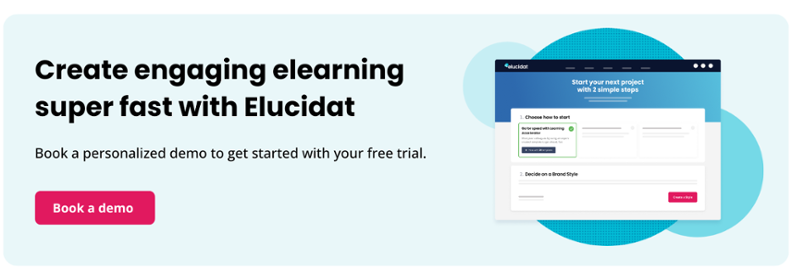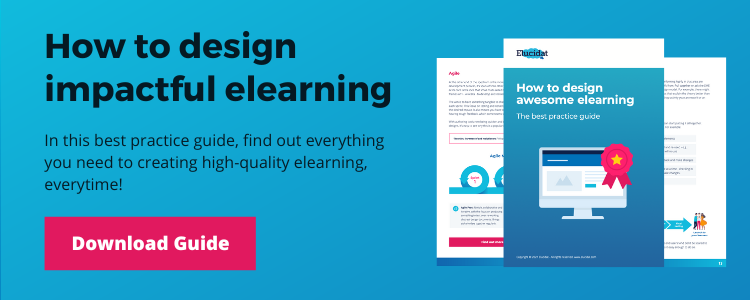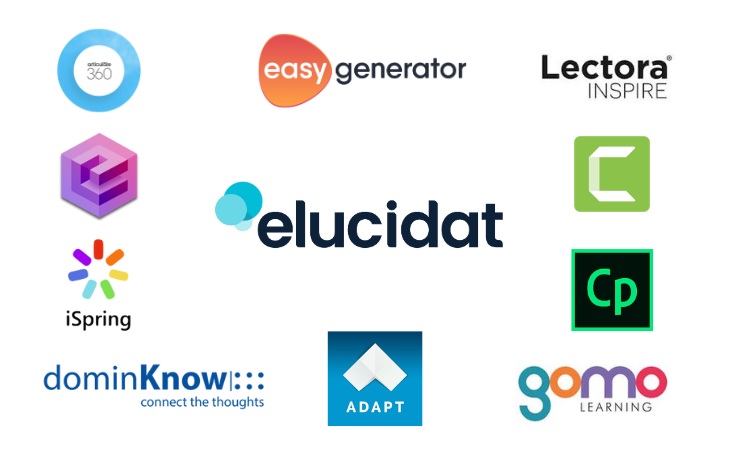Why employee training is important (5 reasons)
5 minute read
Employee training and development programs provide the perfect opportunity to expand the knowledge base within your organization. And most importantly, great learning experiences make for a happier, more productive workforce. Employee training is vitally important to the success of a competitive workforce. No matter the industry, filling the gaps in your employees’ professional knowledge is essential to keeping them productive and fulfilled. Training staff via a high-quality training program can do exactly that.

Implementing an effective employee development program will increase the competency of your staff and boost their job satisfaction, contributing to improved staff retention.
Regular employee training can also improve the overall efficiency of your organization and even the workload between employees with a common knowledge base and skillset. Not only will your employees benefit, but your clients too, increasing the likelihood of repeat customers and word-of-mouth referrals. Creating a training program for employees is truly win-win.
Unfortunately, some organizations fail to realize the value of employee training programs, which can have a detrimental effect on the business itself. In this article, we take a dive into what employee training is, why it’s important, and how you can provide knowledge and skills in a cost-effective way.
What is employee training?
Employee training is about helping your employees learn and develop their skills so that they can become more effective at what they do. Many businesses invest in employee training because it can increase staff motivation, improve productivity and the quality of work. Employees who are trained are more likely to have a long-term commitment to their employer, as well as perform better at work.
Employee training can be delivered through many mediums such as corporate elearning, in-person classroom sessions, face-to-face coaching, group workshops or even a blended approach of all of these.
Whether you’re starting a new business or working for an established company, providing your employees with an effective, impactful employee training course is an investment you can’t afford to neglect.
5 reasons why employee training is important
Most employers wouldn’t take on an under-skilled worker, yet many are reluctant to invest in ongoing job training for the skilled workers that they do have. As workplace technologies and processes continue to evolve, this lack of effective training programs leaves once skilled workers lagging behind.
How can an organization compete with a workforce weaker than its competitors? The short answer is that it’s somewhere between difficult and impossible! Find out all you need to know to develop bulletproof employee training in this Ultimate Guide to Employee Training.
Let’s move on to the five benefits of employee training and why you should invest in it.
1. It’s expensive to lose employees
Hiring new employees is never cheap. A recent survey cited by the go2HR Society indicates that 40 percent of employees leave their positions within the first year due to poor training opportunities. Furthermore, the Centre for American Progress reports that replacing an employee can cost 20% of the annual salary for employees who make between $30,000 and $50,000 (and up to 213 percent of the annual salary for highly trained executives). Training for employees can be a financial investment you won’t want to miss out on.
With that in mind, companies that provide industry standard training will have more engaged employees, and therefore, are more likely to retain employees. It costs money to replace staff, so it simply makes sense to train and develop current staff and improve employee retention at the same time.
2. Trained employees are more efficient
Training for employees can be used to drastically improve productivity and boost employee performance. When your employees are able to complete tasks more efficiently, using the most effective methods, there are two immediate benefits to your business:
- They complete more tasks in a given period of time, maximizing your return on investment (i.e., the hourly wage you pay employees).
- Customer satisfaction is likely to be higher when your services are delivered in a timely manner.
3. Trained employees have higher production standards
Of course, getting work done quickly loses its impact if it isn’t done properly.
Employees who are well trained are more likely to produce higher-quality output the first time around, thereby minimizing mistakes. This creates less wasted time in rework and customers who are delighted with the quality, reliable goods and services.
Offering new employee training also gets your new starters onboarded and working at a high standard from the get-go. By creating a training program for employees, you manifest a learning culture which breathes through your organization, leading to high quality output from your employees in the long run.
4. Trained employees will retain and grow your customer base
Some of the points we’ve already seen describe how training can directly impact your customers’ satisfaction.
And this is very important because customers leaving you is bad. It’s generally accepted that it’s less expensive to maintain existing customers than it is to win new ones.
Losing a customer is a double loss; you’ll lose ongoing revenue from that customer, and it’s unlikely that they’ll be directing potential, new customers to you.
The opposite is also true. A delighted customer can give you a double win! Not only are they liable to become a return customer, but they are also more likely to refer new customers to you.
So, having well-trained staff that results in satisfied customers can save you money, generate revenue, and grow your customer base.
5. Training doesn’t have to be expensive
Employee online training software makes training staff accessible and flexible around their needs. The State of Digital Learning Report shared that 85% of training is during work hours, and 61% of that is on-site vs 32% at home. This means learner expectations are growing. This may sound like an expensive option, but with the right tools you won’t have to max out your budget.
Modern elearning authoring tools, like Elucidat, enable organizations to create quality corporate elearning and online support aids using in-house subject matter experts without the need for expensive tech support.
Leveraging your in-house expertise to create online training elements, face-to-face up-skilling sessions, or even informal Lunch ‘n Learn sessions (i.e., employees bring and eat their lunch while an in-house expert shares some wisdom) are great ways to introduce learning into your organization at minimal cost.

In conclusion
It’s clear that an investment in employee training is vital for any organization looking to succeed.
According to a Deloitte report on accelerating workplace change, training budgets are increasing year on year. It’s not unreasonable to expect this general trend to continue as the pace of technological change increases and the battle to win the customer dollar becomes more competitive.
If you accept that a better-trained workforce is likely to be more profitable than a less well-trained one, then doesn’t it make sense to be a business that invests in training rather than one that doesn’t?
As the saying goes, “If you think training is expensive, try ignorance.” Get in touch for a sample employee training plan and a no-strings demo.





